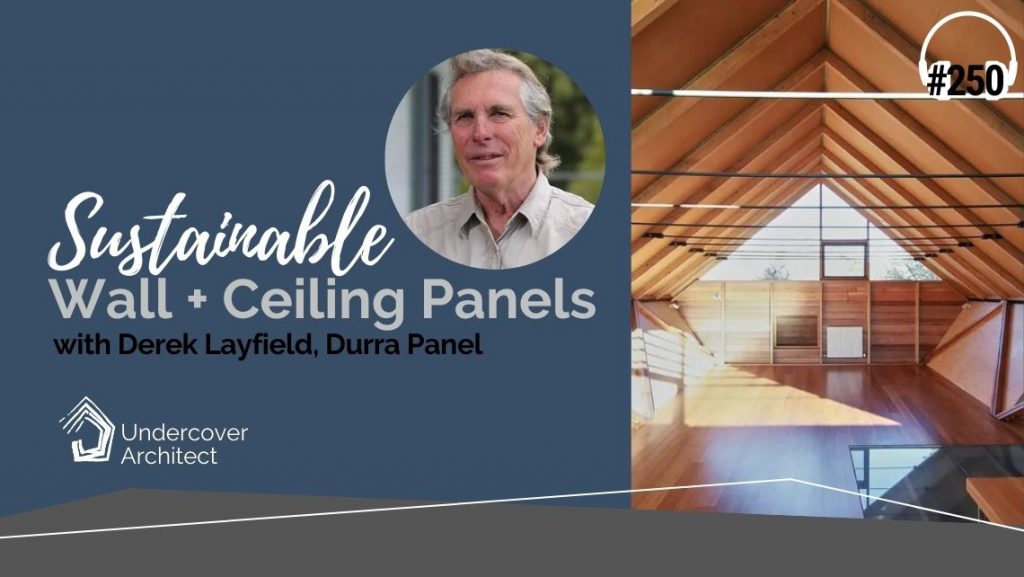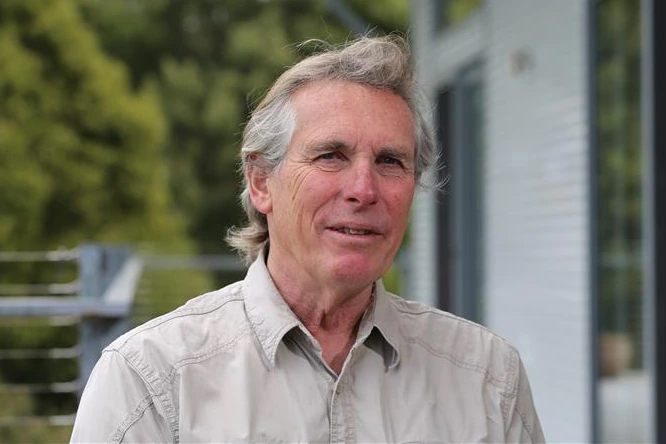
What are Durra Panel sustainable wall and ceiling panels?
And how can you use them in your renovation or new build?
This is Part 1 of my conversation with Derek Layfield, Managing Director of Durra Panel.
Hello! This is Episode 250, and in it, I’m speaking with Derek Layfield, Managing Director of Durra Panel.
If you’ve not heard of Durra Panel, this and the next episode are going to be fantastic for you, as we’re deep diving into what Durra Panel is, and how to use it in your renovation or new build.
In short, though, Durra Panel is a densely compressed straw building panel used in a huge range of projects globally.
Made in Australia, it’s an incredibly sustainable, durable, highly fire resistant building material that’s also fully recyclable and biodegradable.
I’m really excited to be bringing Derek onto the podcast for this and our next episode.
So stay tuned, as we discuss all the ways you can work with Durra Panel, and what you need to know about it for your project.
Now, let’s dive in!

Before we dive into my conversation with Derek, let me take a minute to introduce him to you.
Derek Layfield is the Managing Director of Durra Panel, a truly sustainable and Australian owned business.
Derek joined Stramit Industries as a Junior Cadet in 1979, before purchasing the company’s manufacturing facility and technology rights to their product StramitBoard in 1991. The product was rebranded as Durra Panel and for more than 30 years, Derek has reengineered and manufactured Durra Panel in regional Victoria from waste wheat straw sourced locally from Australian farmers.
Derek is passionate about changing the way the world thinks about building. By speaking transparently about Durra Panel’s cradle to cradle life cycle, he hopes to educate about the natural carbon cycle, highlight greenwashing within the building industry and encourage people to choose truly sustainable building materials.
Derek’s enthusiasm for sustainability and responsible manufacturing has led to Durra Panel being used in airports, schools, stadiums, industrial facilities, offices and homes across Australia and the world.
These episodes are a little longer, but I wanted to make sure we covered a LOT of detail so you can learn a lot about this building material.
We kick off our conversation by hearing more about Derek’s background, before hearing about the benefits of Durra Panel in building and renovating.
In this episode, I ask Derek questions such as:
- How Durra Panel came to be
- What is Durra Panel – what goes into it, and how and where is it made?
- Information on the benefits of Durra Panel, including sustainability, acoustic, thermal, durability, fire, its ability to be recycled and biodegrade, and the improvement it can provide for indoor air quality
- The various applications, including for walls and ceilings, but also for flooring
- The size of panels and their installation requirements
- How it gets fixed and installed
- Cutting it to size
- Using it in load-beading and non-loadbearing applications
LISTEN TO THE EPISODE NOW.
RESOURCES:
Durra Panel
Website >>> https://durrapanel.com/
Instagram >>> https://www.instagram.com/durra_panel/?hl=en
Being installed at Future Food System >>> https://www.instagram.com/p/CFLfkXWltcc/?utm_source=ig_web_copy_link
https://www.facebook.com/DurraPanel
Access the support and guidance you need to be confident and empowered when renovating and building your family home inside my flagship online program >>> HOME METHOD
Learn more about how to get started with your home design with the Happy Home Design mini-course >>> HAPPY HOME DESIGN
Access my free online workshop “Your Project Plan” >>> FREE WORKSHOP


 With over 30 years industry experience, Amelia Lee founded Undercover Architect in 2014 as an award-winning online resource to help and teach you how to get it right when designing, building or renovating your home. You are the key to unlocking what’s possible for your home. Undercover Architect is your secret ally
With over 30 years industry experience, Amelia Lee founded Undercover Architect in 2014 as an award-winning online resource to help and teach you how to get it right when designing, building or renovating your home. You are the key to unlocking what’s possible for your home. Undercover Architect is your secret ally
thank you Amelia – i really enjoyed this episode. We had wanted to use durra panel in our new build but the ‘volume’ builder wouldn’t use it as it wasn’t a standard product that they had used before and wouldn’t ‘guarantee’ the build. I’m so sad about not being able to use it- it’s such an exciting natural based product. I hope it wins a sustainability award and your podcast gets it promoted so the domestic house building industry uses it more readily.
Hi Shell, glad you enjoyed the podcast!
– Team UA
Sadly my BASIX assessor said the R factor is only about 1.2 and I would need to use insulation. How is it Durra claim it is R4? They say it’s R4 when it’s part of the whole construction. Sadly I can’t afford Durra if it doesn’t amount to R4.
Hi Dallis,
We reached out to Derek Layfield, Managing Director of Durra Panel and this is his response >>>
“The R4 is a system value for walls or ceilings , not a durra Panel value in isolation . See link as a rough example – R value build up for one of our ceiling systems with Durra Panel .
The R value for 50mm thick Durra Panel on its own is 0.62
This is equal to :
10 layers of 13mm plasterboard (R 0.06 per 13mm thick sheet)
47 layers of 6mm Fibre Cement (R 0.013 per 6mm thick sheet)
9 layers of brick (R 0.07 per 110mm thick brick)
For NCC thermal compliance , insulation will generally be required in ceiling and wall systems as part of the system build up.
The thermal conductivity or k value for Durra Panel is just 0.081 watts per m K (the lower the number the better, very slow to transmit heat or cold from one side of Durra Panel to the other). This is very significant when considering the thermal performance of a building envelope – ceiling and wall systems, keeping a space cool or warm depending on the season. By comparison, the k value for cement sheet is 0.32.”
Analysis of Durra Roof/Ceiling System
I hope that’s helpful for you!
Cheers!
Zandra